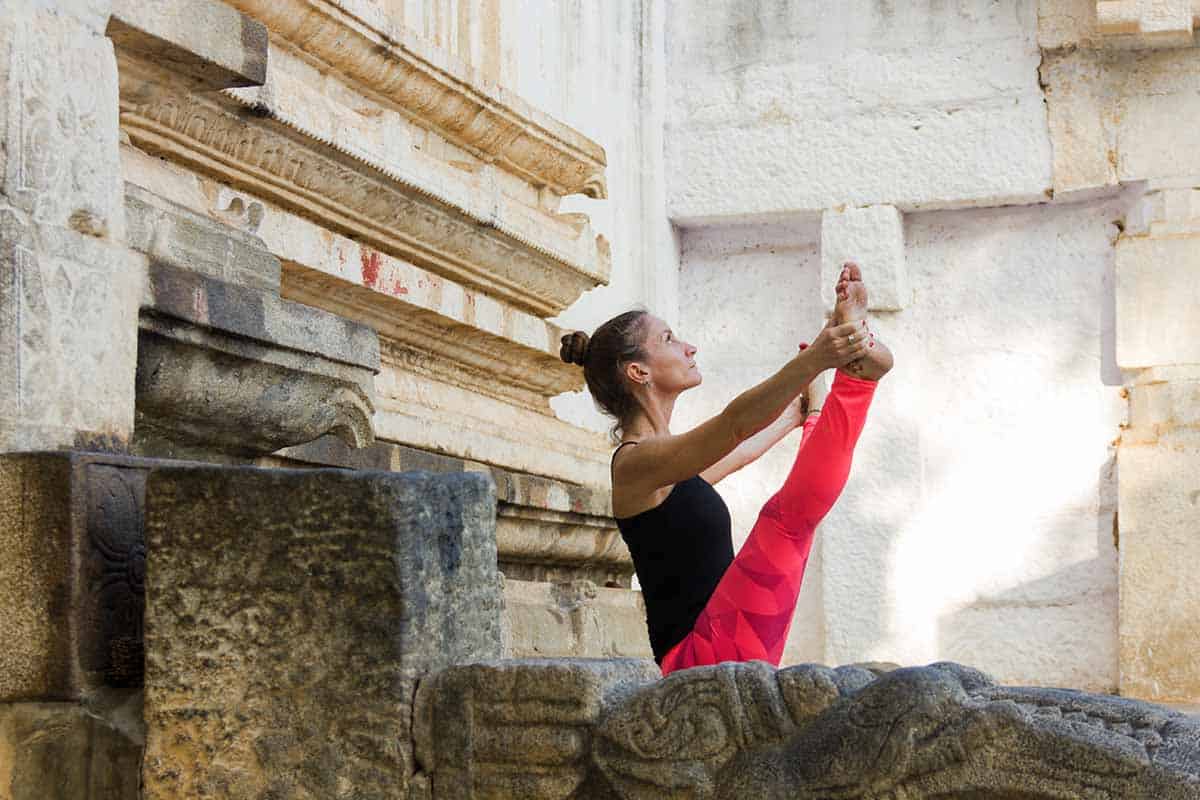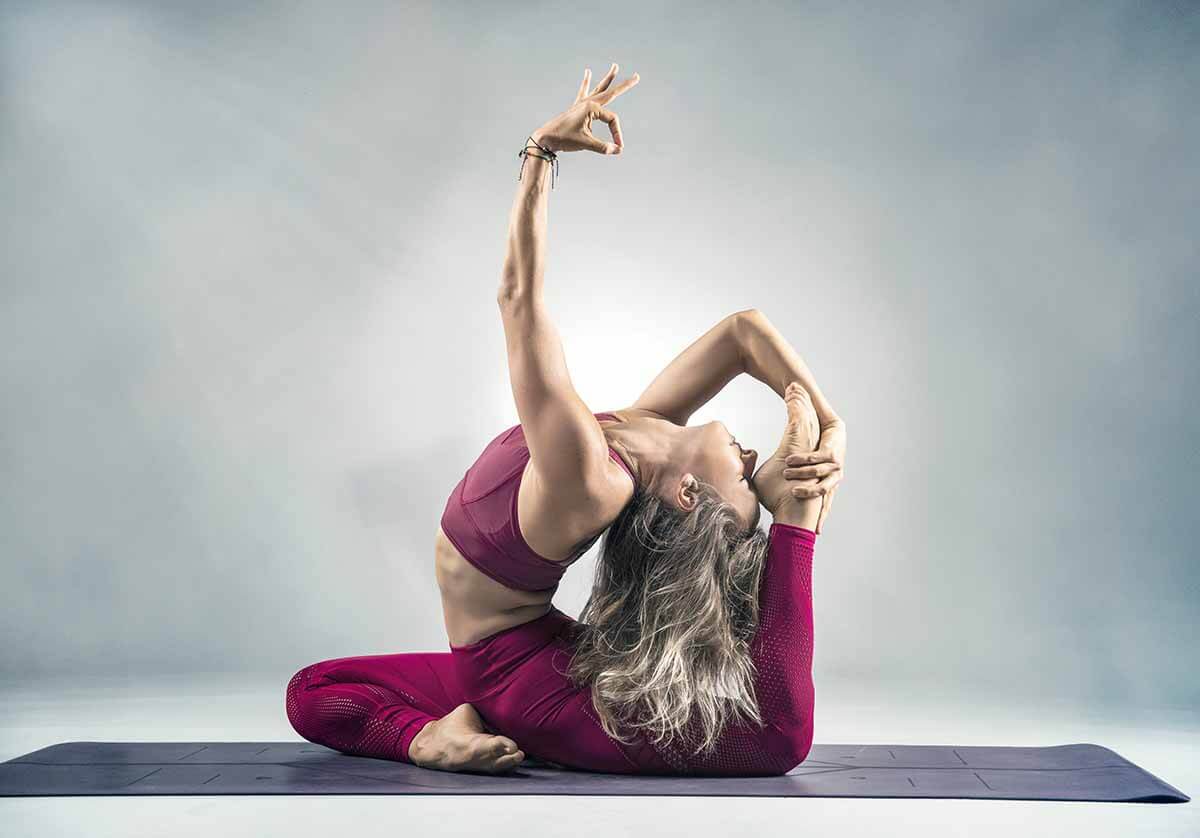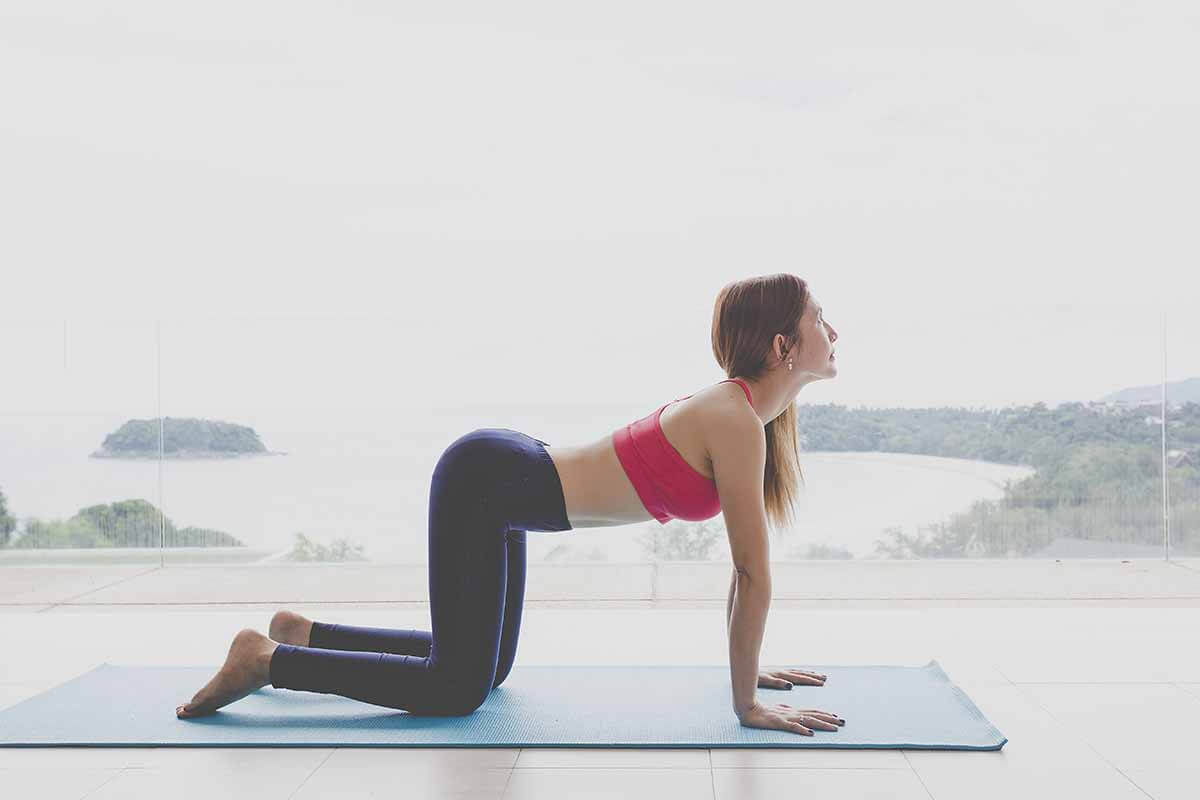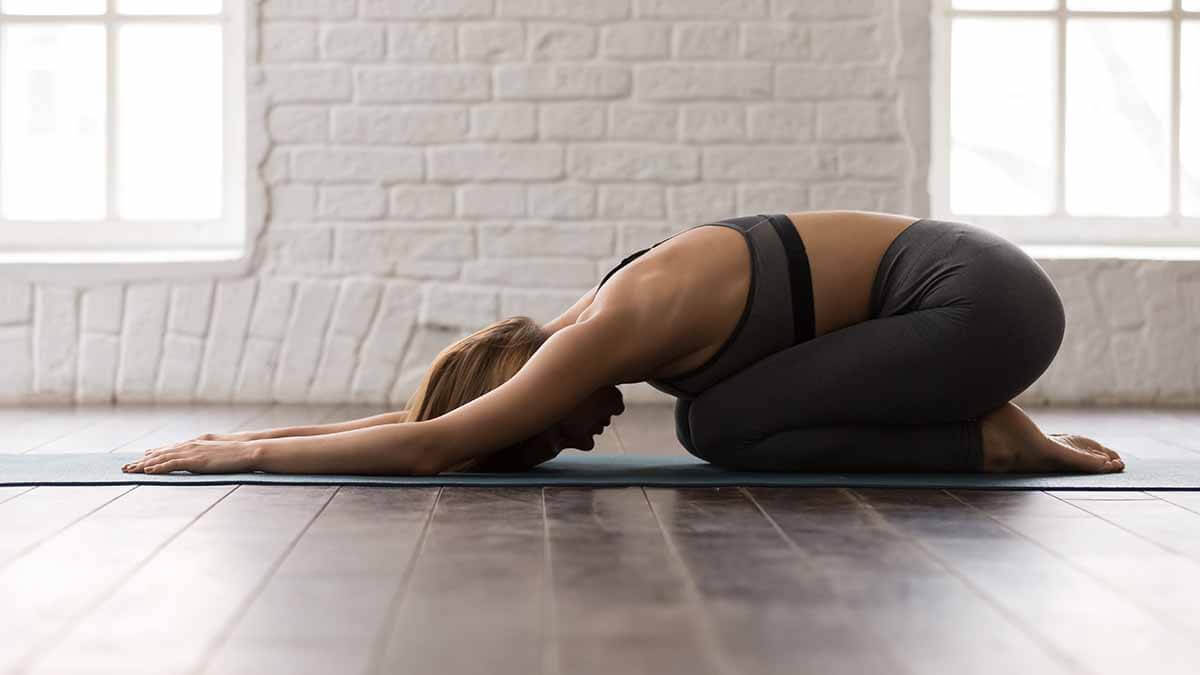
ne of the greatest benefits of yoga as a practice is that while there are specific steps to performing its various poses, yoga practices have the freedom to alter these poses to better suit their bodies. This is referred to as adaptive yoga, making yoga an inclusive practice accessible to anyone willing to learn, grow, and participate.
In this article, we will discuss Adaptive Yoga. More specifically, we will describe how adaptive yoga poses differ from the standard yoga poses and where you can go for adaptive yoga sessions. We’ll also list the ten most common adaptive yoga poses you can perform at home to help you pursue yoga in the most comfortable and challenging manner possible that still benefits your body and mind.
Article Topics
How Does an Adaptive Yoga Pose Differ from a Regular Yoga Pose?
If this is your first time learning about adaptive yoga, you might be wondering how these poses differ from a regular yoga pose and if/how this affects your yoga session overall.
Adaptive yoga poses are variations of regular yoga poses that are modified to accommodate any physical ability. This includes people with balance impairments, injuries, mobility disabilities, and other physical limitations but, it can also aid yoga practicers with illnesses or chronic pains that prevent them from performing or holding regular yoga poses without risk of pain or injury.
The overarching difference between adaptive yoga poses and regular yoga poses is that regular poses have clear steps for how they should be performed that apply to all users, whereas adaptive yoga poses are more tailored to the individual and their physical capabilities.
Rather than push them to perform a pose like everyone else in the room, adaptive poses aim to challenge a person’s body in a way that is still comfortable, whatever that means for them. This might involve the individual utilizing tools to aid their pose, such as a chair, extra cushions, walls, etc.
Where Can I Practice Adaptive Yoga Poses?
Adaptive yoga and its poses might not be as well-known as regular yoga, but that doesn’t mean it’s limited in where you can practice it.
One of the benefits of adaptive yoga poses is that you can perform them virtually anywhere because you can modify your pose based on your body and environment. You can perform these poses in your bedroom, your office, a cramped living space the possibilities are endless. We’ve even seen some avid yoga users performing adaptive yoga poses on surfboards while floating in the ocean.
Another common place you can perform adaptive yoga poses is in bed. This is beneficial for people who are bed-ridden for any reason or find their beds provide the most comfort and support for their yoga sessions.
Of course, apart from these locations, you can always go to a yoga studio that hosts adaptive yoga classes. A vast number of gyms and yoga studios worldwide offer countless adaptive yoga classes for their users. However, if you can’t make it to the studio, there are some fantastic online resources as well, including studio websites and YouTube videos.
9 Common Adaptive Yoga Poses
Yoga, in general, is easy to adapt to your specific needs, so there are a vast number of adaptive yoga poses nearly any student could perform. So, if you find you have certain physical limitations preventing you from safely and comfortably performing regular yoga poses, consider incorporating some of the ten most common adaptive yoga poses we have listed below.
1. Supported Warrior III
There are multiple Warrior poses in yoga, but one of the most beneficial for strengthening your legs, ankles, and core is the Warrior III. However, this pose can be extremely challenging for many people as it requires you to balance one leg and attempt to create a perfectly straight T-shape with the rest of your body.
The best adaptive pose suggestion we have for this is the Supported Warrior III, which involves placing a chair in front of you with the back facing you. You’ll then grasp the top of the chair back and lift one leg as high as you can while balancing on the other and bracing yourself against the chair. This will strengthen your hips and knees and remove excessive strain on your one balancing leg.
2. Supported Warrior II
The Warrior II pose is another classic yoga pose, especially for beginners. As a result, many people can feel discouraged when this seemingly simple pose is too challenging, uncomfortable, or physically impossible for them to perform but don’t lose hope.
The Supported Warrior II pose can still provide you the same benefits as the regular pose as far as strengthening your legs and opening up your chest and hips. All you need is a chair for additional support.
To create the Warrior II pose, the individual must have one leg bent at a right angle with the other angularly stretched behind them and their arms held straight upright. The Supported Warrior II mimics this, but instead of holding your own body weight, you’re going to place a chair underneath your right-angled leg for support. This will alleviate knee pains and allow you to focus on the pose more than your balance.
3. Wall Dog
This adaptive yoga pose is a variation on the popular downward-facing dog, which requires the individual to essentially create a triangle or upside-down V-shape with their arms and legs. The goal of the downward-facing dog is to improve posture, circulation and straighten or align your spine. However, if you find it difficult to hold this pose or even create the ideal shape, you should try the Wall Dog pose.
There are a few ways you can perform the wall dog: on your feet, seated, or with two chairs. To perform it on your feet, stand in front of a wall and try to create an L-shape by bracing your hands against the wall and standing a few feet away from the base of the wall.
You can do the same thing seated where your arms are even with your ears, or you can forgo the wall all together and perform this pose seated and use the back of a chair placed in front of you. All variations will help lengthen your spine and stretch your arms and shoulder muscles.
4. Supported Child's Pose
Child’s Pose is another beginner-level pose that might be disheartening for people to struggle with. This pose can be particularly difficult for individuals who are larger in size or have very wide hips, as the goal is to fold yourself into a fetal position. Luckily, there’s a comfortable alternative.
The best adaptation of the child’s pose is the Supported Child’s Pose, where you place a yoga block or thick blankets underneath your bottom, place your legs out at a wider angle, and then lay on top of a yoga bolster pillow. This will lift your torso and lengthen your spine without putting too much pressure on your hips.
5. Supported Standing Half Forward Bend
The Half Forward Bend is usually the pose yoga students will perform before they graduate to the standing forward bend, which essentially folds their bodies completely in half as they place their hands flat on the ground next to or in front of their feet a daunting challenge for anyone. The Standing Half Forward Bend allows you to either place your hands a bit further, creating a U-shape, or you can place them on your shins to create a P-shape with your body, but even this can be too much for some people’s backs.
Instead, try placing two yoga blocks vertically underneath your hands to create the U-shape of this pose. While you do this, spread your feet, so they are level with your hips, and don’t be afraid to bend your knees a bit if necessary. You’ll still get that deep stretch in your back and the back of your legs, but it should be much easier to hold.
6. Seated and Supported Mountain Pose
At first glance, the Mountain Pose might just look like standing, but it’s actually the foundation of numerous standing yoga poses and is highly beneficial for improving posture and body alignment as well as giving you an opportunity to really work on your breathing technique. There are two adaptions of this pose, a Supported Mountain Pose, and a Seated Mountain Pose.
The Supported Mountain Pose can be done by either placing your heels and head against a wall for support, or you can opt to hold a basic cane or the back of a chair in one hand while you stand and create that optimal posture.
For a Seated Mountain Pose, simply sit in your chair with your back straight, your shoulders back, and take deep breaths as you hold this position. You’ll follow all of the steps of the regular Mountain Pose but focus on the positioning from the waist up.
7. Seated Eagle Pose
This adaptive yoga pose is a variation on the regular Eagle Pose, which can look incredibly daunting at first glance. This pose is excellent for balance as well as calf, ankle, thigh, and hip strength, but there’s no doubt it can take a toll on your body if you attempt when your body isn’t ready.
If you want the benefits of the Eagle Pose but can’t perform it in its regular form, try the Seated Eagle Pose. To do this in a seat or wheelchair, you’d slowly inhale as you raise your arms in front of you with your elbows bent at a 90-degree angle and forearms pointed up. You’ll then exhale as you cross your arms over each other at the elbows and rest the backs of your hands together and hold this position for 20 to 30 seconds.
You could also perform this pose seated on the ground and sit cross-legged or with your legs in the Cow Face Pose position. Either way, you’ll stretch your spine and strengthen your shoulders, as well as stretching your hips, ankles, and thighs if you’re seated on the ground.
8. Seated Sphinx
The Sphinx Pose is usually performed lay down with your torso lifted in the air to stretch and strengthen your spine and abdominal muscles. While you can modify this pose to only lift half of your torso rather than your entire torso, you can also modify it by performing the pose seated.
To perform the Seated Sphinx pose, place a chair in front of you tall enough for you to place your forearms against it at a 90-degree angle. You’ll then curve your back until you can feel a deep but comfortable stretch and hold this position for 20-30 seconds. This should provide the same benefits of the original pose, both for your abdominal muscles and your spine, when done properly.
9. Seated Head to Knee
The classic Head to Knee pose is great for stretching your hips and knees, and you can accomplish the same results seated as you would standing. To do this, you’ll need two chairs and a resistance band.
While seated, place the second chair in front of you and place one leg on the chair, so it is laying flat while your other leg is at a 90-degree angle. Place the resistance band around your foot and hold on to it firmly as you gently pull your foot back for a deep stretch in your calf and knees. To stretch your back, lean forward as far as you can over your horizontal leg to lengthen your spine.
Final Thoughts
Not everyone will need adaptive yoga poses all the time, but knowing that these poses are an option can be highly beneficial for everyone, especially beginners or individuals who have physical or health-related struggles that limit their ability to perform regular yoga poses. Yoga bolsters are a very useful tool to help with those adaptive yoga poses as well. You can check out the uses of yoga bolsters here!
Even if you’re used to performing the standard poses, incorporating adaptive poses could give your muscles a break they need from the more strenuous poses you typically do. So, keep a list of your favorite adaptive yoga poses on hand just in case.


